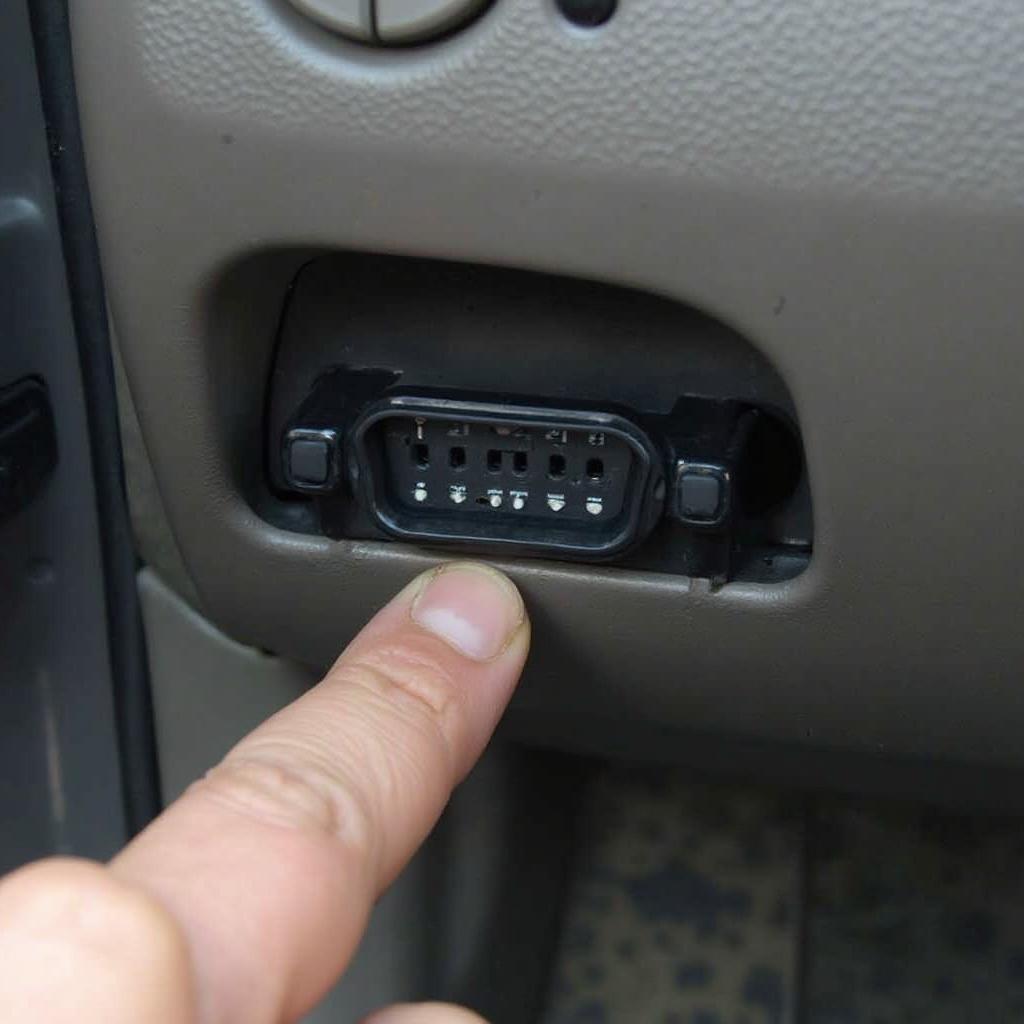Adding OBD2 to an older car can seem daunting, but it’s often more straightforward than you might think. This guide will walk you through the process, from understanding OBD2 compatibility to the installation itself. We’ll explore various options and provide helpful tips for a successful upgrade.
Understanding OBD2 and Its Benefits
Before diving into the how-to, let’s clarify what OBD2 is and why you might want it in your older vehicle. OBD2, or On-Board Diagnostics 2, is a standardized system that allows external devices to access your car’s diagnostic data. This data can reveal everything from minor sensor glitches to serious engine problems. Having OBD2 access opens up a world of possibilities, including using inexpensive code readers, monitoring your car’s performance in real-time, and even customizing certain features.
Having OBD2 in an older car provides several advantages, especially if you enjoy DIY car maintenance. You can quickly diagnose issues, saving you trips to the mechanic. Imagine being able to pinpoint a faulty oxygen sensor before it causes more significant problems. Plus, the ability to monitor your car’s performance can lead to better fuel efficiency and overall improved maintenance.
Checking Your Car’s Compatibility for Adding OBD2
Not all older cars can be easily retrofitted with OBD2. The first step is to determine if your car is already partially OBD2 compliant. Cars manufactured as early as 1994 might have some level of OBD2 functionality, even if they don’t have the standard 16-pin connector. Check your car’s service manual or look online for resources specific to your make and model. You might be surprised to find that your car already has the necessary wiring and just needs an adapter. add obd2 to older car
What if My Car isn’t OBD2 Compatible?
If your car is pre-OBD2, adding the system can be more complex. It might involve installing an aftermarket OBD2 system that interprets data from your car’s existing computer. These systems often require professional installation and can be more expensive.
Installing an OBD2 System in Your Old Car
If your car is already partially OBD2 compliant, installing the 16-pin connector might be a relatively simple process. Locate the existing diagnostic connector, which may be a different shape or have fewer pins. You might need an adapter cable to connect this to a standard OBD2 scanner. Some cars might require re-pinning the connector, which is best left to a professional if you’re not comfortable working with car electronics.
Professional Installation: When to Call an Expert
While adding OBD2 can be a DIY project, adding obd2 to old car can sometimes be intricate, especially for pre-OBD2 vehicles. If you’re not comfortable working with car electronics, it’s always best to consult a qualified mechanic. They can ensure the system is installed correctly and avoid any potential damage to your car’s electrical system. For more specific compatibility information, you can check resources related to a 2000 grand am obd2 compatible.
Conclusion
Adding OBD2 to your older car can be a valuable upgrade, providing access to crucial diagnostic information and enabling you to take control of your car’s maintenance. While the process can range from simple plug-and-play to more complex installations, understanding your car’s compatibility is the first step. With the right information and approach, you can equip your older vehicle with modern diagnostic capabilities. Remember to consult with a professional if you’re unsure about any step of the process.
FAQs
- Is adding OBD2 to an old car worth it? Yes, especially for DIY enthusiasts, as it allows for self-diagnosis and potential cost savings on mechanic visits.
- Can I install OBD2 myself? It depends on your car’s existing system. Simple adapter installations can be DIY, but complex retrofits often require professional help.
- Where can I find OBD2 adapters for my car? Auto parts stores, online retailers, and specialized OBD2 suppliers are good places to start.
- What if my car is pre-OBD2? Aftermarket OBD2 systems exist, but they might be expensive and require professional installation.
- What are the benefits of having OBD2? Easier diagnostics, real-time performance monitoring, potential for customization, and better maintenance.
- How can I check my car’s OBD2 compatibility? Consult your car’s service manual or look for online resources specific to your make and model.
- What should I do if I’m not comfortable with car electronics? Consult a qualified mechanic for professional installation and avoid potential damage.
Need help with your OBD2 system or have a specific issue with your Dodge? Check out our article about a dodge obd2 p0442 code. Or are you a Mercedes owner? Then you might be interested in understanding the obd2 protocol mercedes uses.
For assistance, contact us via WhatsApp: +1(641)206-8880, Email: [email protected], or visit us at 789 Elm Street, San Francisco, CA 94102, USA. Our customer service team is available 24/7.


